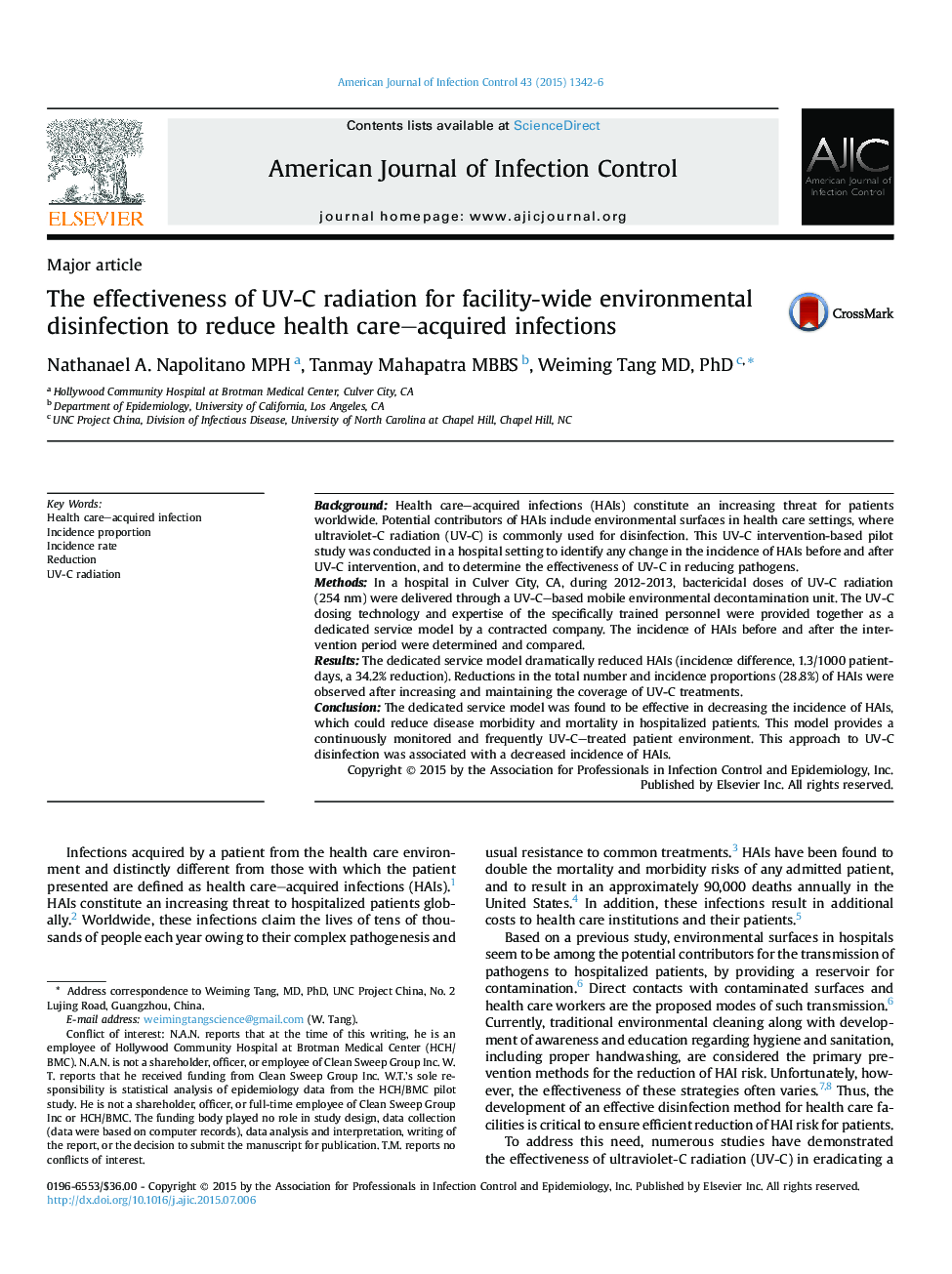| Article ID | Journal | Published Year | Pages | File Type |
|---|---|---|---|---|
| 5866351 | American Journal of Infection Control | 2015 | 5 Pages |
BackgroundHealth care-acquired infections (HAIs) constitute an increasing threat for patients worldwide. Potential contributors of HAIs include environmental surfaces in health care settings, where ultraviolet-C radiation (UV-C) is commonly used for disinfection. This UV-C intervention-based pilot study was conducted in a hospital setting to identify any change in the incidence of HAIs before and after UV-C intervention, and to determine the effectiveness of UV-C in reducing pathogens.MethodsIn a hospital in Culver City, CA, during 2012-2013, bactericidal doses of UV-C radiation (254Â nm) were delivered through a UV-C-based mobile environmental decontamination unit. The UV-C dosing technology and expertise of the specifically trained personnel were provided together as a dedicated service model by a contracted company. The incidence of HAIs before and after the intervention period were determined and compared.ResultsThe dedicated service model dramatically reduced HAIs (incidence difference, 1.3/1000 patient-days, a 34.2% reduction). Reductions in the total number and incidence proportions (28.8%) of HAIs were observed after increasing and maintaining the coverage of UV-C treatments.ConclusionThe dedicated service model was found to be effective in decreasing the incidence of HAIs, which could reduce disease morbidity and mortality in hospitalized patients. This model provides a continuously monitored and frequently UV-C-treated patient environment. This approach to UV-C disinfection was associated with a decreased incidence of HAIs.
